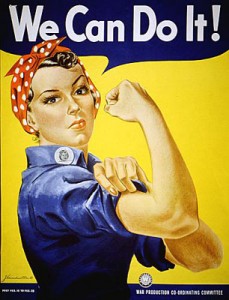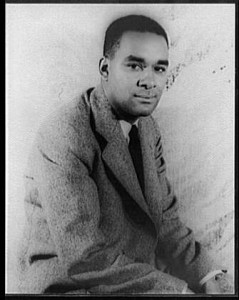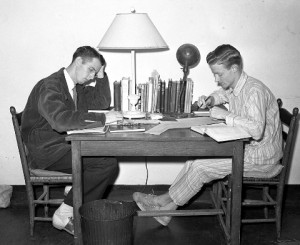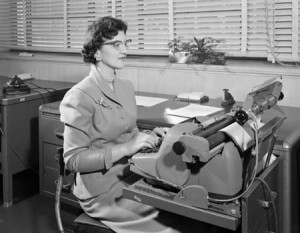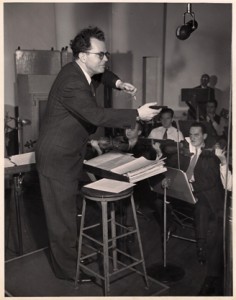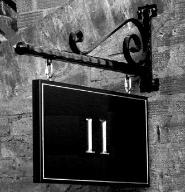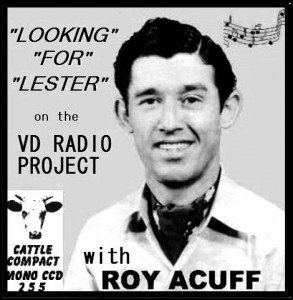 For the seventh time, folk singer and songwriter Tom Glazer picks up his guitar, sees the red recording light go on, and sings at the microphone in all sincerity:
For the seventh time, folk singer and songwriter Tom Glazer picks up his guitar, sees the red recording light go on, and sings at the microphone in all sincerity:
Don’t take a chance go see a doctor
Don’t take a chance go get examined
Don’t take a chance go see a doctor now.
Glazer was taking part in an experiment by the Public Health Service, began in the late 1940s, called “VD Radio Project” (the “VD” was a nicer way of saying venereal disease). He wrote and performed this little song to introduce seven short announcements about venereal disease and the importance of getting seen by a doctor.
VD Radio Project’s goal was to educate the public and dispel taboos about syphilis, gonorrhea, and other venereal diseases. Other than the seven short recordings done by Glazer, the rest of the series consisted of fifteen minute episodes. Some were straight radio dramas, and some were real life stories and voices from those affected by venereal diseases. But the episodes of “VD Radio Project” that had the most impact used a powerful weapon–popular musicians like Tom Glazer, Woody Guthrie, Sister Rosetta Tharpe, Merle Travis, Roy Acuff, and Hank Williams.
These episodes were typical radio dramas in one sense but were also partly told in verse and sung in ballad. The guest stars functioned as sort of narrators and sort of troubadours. These mixtures of music and drama Erik Barnouw, creator of the series, called “hillbilly operas.” The songs were sometimes reactions to situations, but also were used to move the plot forward. Alan Lomax, a pioneer in collecting and preserving American folk music, was key in creating this style of radio musical drama.
One episode written by Lomax, Looking for Lester, integrated Roy Acuff and His Smokey Mountain Boys into a drama based on a true story. The episode is about Lester, who falls in love with Ann, but sleeps with another girl and contracts syphilis. Or as Roy Acuff put it: “Old Lester was fit to be tied, went to the bar and got fried,” and then, “went on a spree that was a dilly, with a filly named Millie!”
Lester returns to Ann, and the young couple marry.
Sound your “G” chord boys and I’ll tell Lester’s story.
A chord is strummed on a steel string guitar and Roy Acuff and the Smokey Mountain Boys play this tune:
Is there anything nicer in the whole round world my honey
Is there anything nicer in the whole round world My babe.
Is there anything nicer in the whole round world
When a girl loves a boy and a boy loves a girl.
Honey o baby mine.
Lester and Anne got married in May my honey
Lester and Anne got married in May my babe
Lester and Anne got married in May
Life was happy and life was gay
Honey o baby mine.
But, alas, everything is not so happy. Ann gets pregnant and during a checkup with her doctor she finds out that she has syphilis. Lester leaves in anger and shame. Roy Acuff gives the drama a touch of reality by informing the audience that this is about someone he really knows who might be listening. He begs his friend to come back to his wife and their child, and tells him that syphilis can be cured.
J. David Goldin calls this radio play, “Good radio!” And I agree. Especially since it and the other “hillbilly operas” treaded new ground artistically for radio. They combined the popularity of musical celebrities, original song writing and singing, radio drama, real life experiences, elements of radio opera, and medical advice all to an altruistic end.
These musical episodes of “VD Radio Project” are getting attention today for the stars that were in them. The episode with Hank Williams has understandably been given much attention. A researcher in New Hampshire, Fred Bals, is currently writing a book about the series and plans to do research at Marr. We say, “good luck!” to Fred, and hopefully, lots more books will come out of the J. David Goldin Collection!
Troy Cummings, guest contributor

